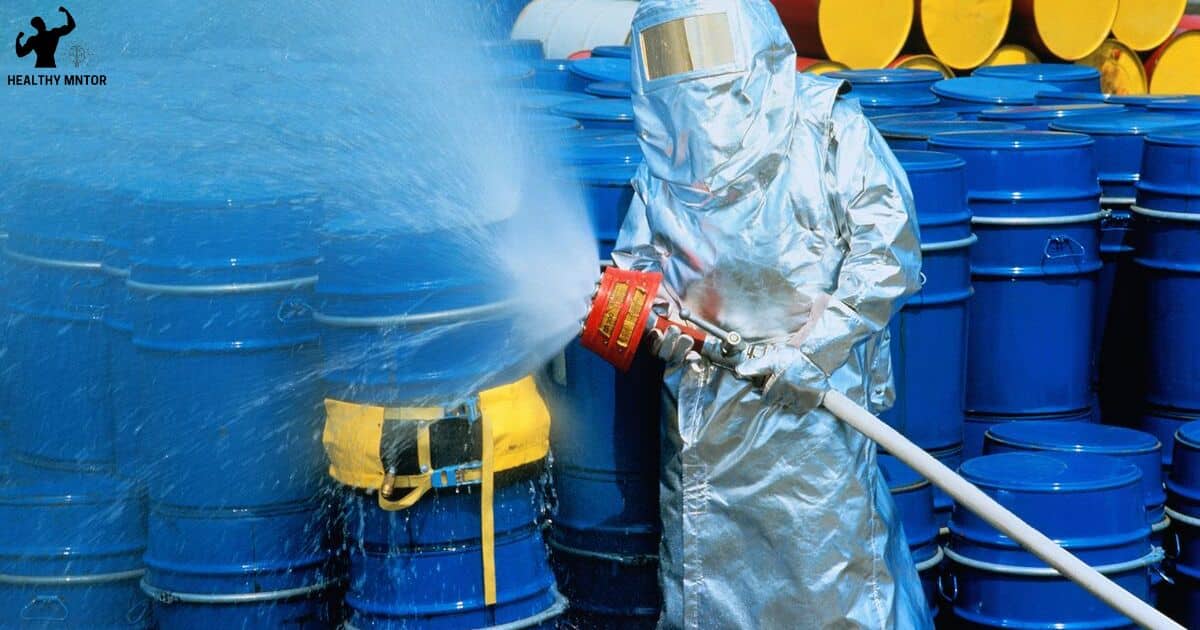In the realm of mining, tailings dams stand as looming giants, safeguarding the remnants of extraction processes. However, within their towering confines lies a hidden peril, threatening both the environment and nearby communities. This article explores the health and safety risk associated with these dams, delving into the potential for dam failures, toxic chemical release, and environmental contamination. Additionally, it examines the management and mitigation measures that can be implemented to ensure the well-being of all those involved.
Key Takeaways
- Dam failures can result in devastating flooding downstream, leading to loss of life, property damage, and displacement of communities.
- Toxic chemicals stored in tailings can be released into the environment during a dam failure, posing significant health and safety risks.
- Tailings dam failures can result in significant environmental contamination, including water, soil, and air pollution, with serious risks to human and ecological health.
- Nearby communities are at risk of exposure to toxic waste materials, leading to a range of health problems such as respiratory issues, gastrointestinal problems, and chronic diseases.
Dam Failures
Dam failures pose a significant risk to the health and safety of communities and the environment. When a dam fails, it can result in the release of a large volume of water, sediment, and other materials stored behind it. This sudden release can lead to devastating flooding downstream, causing loss of life, property damage, and displacement of communities. The force of the rushing water can also erode the surrounding land, leading to further destruction and environmental degradation.
The release of contaminants, such as heavy metals and chemicals, can contaminate water sources, soil, and vegetation, posing long-term health risks to both humans and wildlife. Therefore, preventing dam failures and implementing effective emergency response plans are crucial for ensuring the well-being of communities and protecting the environment.
Toxic Chemical Release
When a tailings dam fails, the release of toxic chemicals poses a significant health and safety risk to both human and ecological communities. Tailings dams are designed to store the waste products, or tailings, from mining operations. These tailings can contain a variety of harmful substances such as heavy metals, acids, and radioactive materials. When a dam fails, these toxic chemicals can be released into the surrounding environment, contaminating water sources, soil, and air.
The consequences of toxic chemical release can be severe, leading to acute and chronic health problems for humans, as well as devastating impacts on wildlife and ecosystems. Understanding the potential for toxic chemical release is crucial in assessing the overall health and safety risks associated with tailings dams. This brings us to the next section, which explores the issue of environmental contamination caused by tailings dam failures.
Environmental Contamination
The occurrence of tailings dam failures results in significant environmental contamination. When a tailings dam fails, it can release a large volume of toxic waste materials into the surrounding environment, contaminating water, soil, and air. This environmental contamination poses serious risks to both human and ecological health. The release of toxic chemicals can lead to the pollution of water bodies, making them unfit for human consumption and harmful to aquatic life.
The contaminated soil can negatively impact agricultural lands, affecting crop yields and posing risks to food safety. The release of pollutants into the air can contribute to air pollution, causing respiratory issues and other health problems. Therefore, preventing tailings dam failures is crucial in order to mitigate the environmental contamination associated with such incidents.
Health Risks for Nearby Communities
The occurrence of tailings dam failures poses significant health risks for nearby communities due to exposure to toxic waste materials. When a tailings dam fails, it can release a large volume of toxic waste, including heavy metals, chemicals, and radioactive materials, into the surrounding environment maximum mean in health insurance. These toxic substances can contaminate the air, water, and soil, leading to a range of health problems for the people living nearby.
Inhalation of airborne contaminants can cause respiratory issues, such as asthma and bronchitis, while ingestion of contaminated water or food can result in gastrointestinal problems and long-term chronic diseases. Exposure to heavy metals like lead, mercury, and arsenic can lead to neurological disorders, developmental delays, and even cancer. The health risks associated with tailings dam failures highlight the need for effective management and mitigation measures to protect nearby communities from these hazards.
Management and Mitigation Measures
One crucial aspect in addressing the health risks associated with tailings dam failures is implementing effective management and mitigation measures. These measures are necessary to minimize the potential harm to nearby communities and the environment. The management of tailings dams involves a comprehensive approach that includes regular inspections, monitoring, and maintenance. This ensures the integrity of the dam and identifies any potential risks or issues that may arise.
Mitigation measures aim to reduce the likelihood of dam failures and minimize their impact. These measures may include the use of advanced technologies for dam design and construction, as well as the implementation of emergency response plans and evacuation procedures. Additionally, strict regulations and guidelines should be enforced to ensure the safe operation of tailings dams and to hold responsible parties accountable for any negligence or non-compliance. Overall, the effective management and implementation of mitigation measures are essential for safeguarding the health and well-being of communities living near tailings dams.
FAQ’s
How Are Tailings Dams Constructed and What Materials Are Typically Used?
Tailings dams are constructed using a combination of natural materials such as soil, rock, and clay, along with engineered materials like geotextiles and geomembranes. The construction process involves careful planning and design to ensure stability and prevent environmental hazards.
What Are the Main Factors That Contribute to Dam Failures?
Dam failures can result from a combination of factors, such as poor design, inadequate maintenance, natural disasters, and human error. Understanding these factors is crucial in mitigating risks and ensuring the health and safety of tailings dam structures.
Are There Any Long-Term Effects on the Environment After a Toxic Chemical Release From a Tailings Dam?
Tailings dams pose a significant health and safety risk due to the potential release of toxic chemicals into the environment. These releases can have long-term effects on the surrounding ecosystem, including the contamination of water sources and the disruption of biodiversity.
What Are Some Common Health Risks That Nearby Communities May Face Due to Tailings Dam Operations?
Common health risks that nearby communities may face due to tailings dam operations include exposure to toxic substances, such as heavy metals and chemicals, leading to potential respiratory, neurological, and other chronic health conditions.
How Do Regulatory Agencies and Industry Professionals Ensure the Management and Mitigation of Risks Associated With Tailings Dams?
Regulatory agencies and industry professionals ensure the management and mitigation of risks associated with tailings dams through a combination of rigorous monitoring, strict compliance with safety guidelines, implementation of engineering controls, and regular inspections to detect and address potential hazards.
Conclusion
In conclusion, tailings dams pose significant health and safety risks due to potential dam failures, toxic chemical release, environmental contamination, and health risks for nearby communities. These risks necessitate effective management and mitigation measures to ensure the safety and well-being of individuals and the environment. It is crucial to prioritize comprehensive monitoring and maintenance programs to prevent catastrophic incidents. As the saying goes, “An ounce of prevention is worth a pound of cure,” proactive measures can greatly reduce the likelihood and impact of tailings dam accidents.







